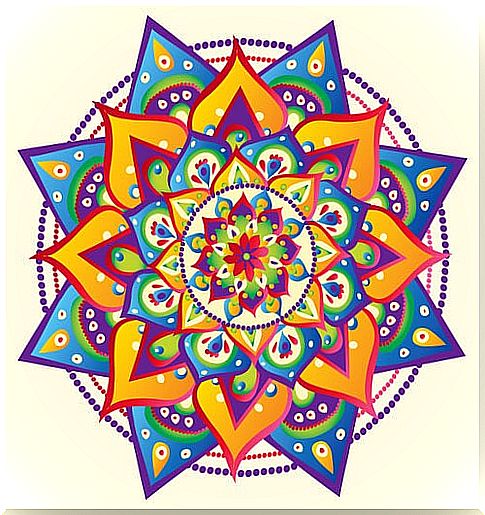The Technique Of The Mandala

Mandala is a Sanskrit term which means ” center, circle, magic ring “. In the dictionary, it is defined as a complex design, which is often circular and which represents the regulating forces of the universe, using meditation as a support.
Generally, a mandala is a symbolic image based on geometric shapes such as circles and squares, which are related to spirituality.
There is an endless variety of mandalas, from the simplest to the most complex. Drawn on a sheet, painted or woven, it even constitutes the plan of certain buildings.
Used since very ancient times, mandalas originate from India. They spread through Eastern culture and later, thanks to Swiss psychiatrist Carl Gustav Jung, in the West.
Jung claimed that the mandalas were the representation of the mind in its entirety, from consciousness to the subconscious.
The advantages of mandalas
From a spiritual vision, the mandalas are like energy centers of balance and purification, which help us to transform the vision we have of our environment and of ourselves.
Anyone, regardless of age, can draw and paint a mandala, in order to achieve many benefits. The simple act of coloring a mandala helps a person achieve a state of calm.
The shapes and colors used in the mandalas express the thoughts, emotions and hunches of the person who made them. The same color can have different meanings, depending on the mood of the person.
Mandalas often represent the connection between the inner world and the outer reality. Drawing and interpreting a mandala generally means coming into contact with one’s own intimacy.
Mandalas can be used in meditation or for relaxation techniques, thus enhancing the person’s creative process.
A 2005 study by Nancy A. Curry and Tim Kaser found that crafting sand mandalas was very effective in reducing anxiety and stress levels.
Mandalas are like a form of meditation in action. As the person creates or observes it, he frees himself from his thoughts and his mind will then empty.
They help us focus, just as they allow us to achieve mental stability and spiritual balance by deepening self-knowledge.
Today, the technique of the mandala is used in the educational environment and the field of rehabilitation.
In the educational environment, they are used as tools to improve children’s attention and concentration, to develop precise motor skills, as a means of communication and expression as well as to overcome situations of emotional stress.
In some day hospitals, cancer patients are even offered to color mandalas to offer them a means of relaxation and concentration.
We can work with mandalas in different ways:
– Observe a mandala, in a quiet place, for three to five minutes. This practice is like a meditation exercise, using the mandala as a support.
– Color a mandala. To do this, we can look on the internet or in a book of mandalas and choose the one that appeals to us the most. Once selected, we can start coloring it.
– Create your own mandala. In this case, we first design the mandala and then color it. This practice is the most recommended for doing personal work.
Once drawn and colored, it will be necessary to find what it expresses through observation. Although you may not find its meaning, the mandala can have an effect on you, in an unconscious way.







